HAJJ-MY JOURNEY OF FORGIVENESS, REDEMPTION AND REBIRTH
Walking in the footsteps of Adam, Abraham and Muhammad
After a lifetime of procrastination Dr. Idries finally makes the Hajj pilgrimage.
FORWARD: Hajj was never something I really wanted to do.
Hajj is a required journey for every physically and financially able Muslim at least once in his or her lifetime. I have to be completely honest, while Hajj was something that I’ve always known I would have to do, it was never something that I ever wanted to do. Sure Hajj is supposed to be this great spiritual journey, but I rarely heard any positive Hajj experiences from family and friends that had gone before me. Even the stories that were presented in a positive light honestly seemed pretty dreadful to me. So my head was filled with horror stories about the crowds (2-4 million people in a very confined space), the heat (think Saudi Arabia in the summertime, enough said), the conditions which could politely be described as unhygienic and of course the occasional mass casualty due to trampling’s or fires. Disney World Hajj is not. This meant years of excuses when my better half brought up the idea of making Hajj. Sometimes finances were the excuse (Hajj ain’t cheap folks), other times family (new babies) or career (residency, starting and nurturing a new private practice, etc…) were the excuses, but the overall theme was the same: I just wasn’t ready to go. Every Hajj pilgrim leaves home with the understanding that he or she very well may not return. You’re supposed to get all of your affairs in order and stated bluntly, you’re supposed to prepare yourself for death. So the idea of Hajj definitely scared me.
On the other side of it all now, I’ve come to realize that what makes Hajj so scary is the same thing that makes it so inexplicably beautiful simultaneously rewarding. Human beings spend a great deal of our lives trying to control our destiny from big things like our education and career choices to smaller things like the route we take to work. During Hajj however, you relinquish all control and for five days you are one with God (quite paradoxically so since you are surrounded by millions). For five days you are a mere speck in the mass of humanity that has converged from every corner of the globe with the shared sole purpose of worshiping God and self improvement. For this finite period of time you have absolutely zero control over your surroundings, zero control over your activities and zero control over your fate. While this probably sounds viscerally unappealing to most folks, it quickly not only becomes okay but it becomes welcome, even for a type A control freak like yours truly. You really learn what it means to let go and let God. All of the preceding years when I made excuse after excuse to avoid Hajj, the reality was that it just wasn’t my time. Through this journey I came to realize that you will never be ready for Hajj until Hajj is ready for you. Hajj is a deeply personal transformative journey and it means different things to different people. God knows when your heart and your soul is most in need of this transformation and for me that time was now. It was time for my personal journey of forgiveness, redemption and rebirth; it was my time to make Hajj.
WHAT IS HAJJ?:
Hajj is one of the so called “five pillars of Islam” that guide the lives and daily activities of every Muslim. The other pillars are the declaration of faith to one God (Shahadah), praying five times a day to that one God (Salat), fasting during the month of Ramadan and giving charity to the poor (Zakat). Hajj in particular is the holy pilgrimage to the city of Mecca that each financially and physically able Muslim must make at least once in their lifetime. There are specific rites that pilgrims must perform on each of the five days of Hajj. The purpose of these rites is to connect the pilgrim to God, allowing him or her to bear their soul and their sins, seek forgiveness and work towards renewal and rebirth. Many of the rites recreate the actions of prophets Adam, Abraham (his wife Hagar and son Ismael) and Muhammad and they have been in existence for centuries.
BEFORE HAJJ: Umrah (the mini-Hajj)

The next morning started bright and early with Fajr (the morning prayer) and a light breakfast. Today we were heading to Mecca to perform Umrah, which is also known as the lesser pilgrimage since it only takes a few hours. The big event for this morning was entering the state of Ihram. Ihram is both a physical state and spiritual state and it is required of all pilgrims before performing Umrah or Hajj. Ihram has physical requirements (you wash and scent your body before putting on the two pieces of plain seamless white cotton that all men must wear) and spiritual requirements (you must refrain from everyday matters including sexual relations with your spouse, fighting and swearing). Physically pilgrims are meant to be indistinguishable from one another (because regardless of our status in life we are all equal in the eyes of God) and as close to naked as we can be (while still covering the important bits and bobs) so that we present ourselves to our Lord as we were on the day that we were born (rebirth). Spiritually, Ihram is meant to represent a state of purity and submission. Once in Ihram, your mind is meant to be focused on God, worship, your oneness with God and your quest for forgiveness, rebirth and renewal.

While this obviously isn’t me (I would never wear those shoes), this is a nice full body shot of what the Ihram looks like. It is simply two plain pieces of white seamless cloth (one for the top, the other for the bottom) and simple shoes that leave the ankles uncovered.

After donning my Ihram and bidding my relatively luxurious digs farewell (things were going to get a lot worse comfort-wise and I knew it), we all headed down to our buses. Our tour group had four buses, one for each package. This meant that my wife and I were making the eight hour journey to Mecca with all of our fellow 10-day package peeps.

Close to noon we boarded our bus and started the long journey to Mecca! Our first stop was Masjid-u-Shajarah, about thirty minutes outside of Medinah. Masjid-u-Shajarah is the Miqat for pilgrims departing Medinah. A Miqat is a location by which pilgrims must be in full Ihram before continuing the journey to Mecca.

A few hours into the journey, we made our first pitstop. Almost everyone on the buses made use of the bathrooms while the brave amongst us took advantage of Burger King and Baskin Robbins. My bowels and I would have no part of that! Getting a case of the bubble gut in the middle of the Saudi desert seemed like an experience I would want to avoid.

One of the most striking visuals for me throughout Hajj was the sight of all the men in their Ihrams. Regardless of color, ethnicity, language or financial position, for these few days, in this one place, everyone was equal. Maybe I’m a sap, but I really loved that! Back on the bus our journey progressed as the sun slowly sank behind the tan desert landscape. Eventually, we reached a nondescript apartment building in the Meccan suburb of Aziziyah.

There are many lessons to be learned during Hajj and I truly believe that the lessons learned are driven by the spiritual and emotional needs of the individual. One universal lesson however is that of being appreciative and grateful for what you have. As the bus pulled up to this spartan building, my western sensibilities started to sound an alarm. As we got off of the bus and walked into the courtyard, that alarm was getting louder and louder. As I walked into the building and explored the hallways, the sound of the alarm was almost deafening

I’m the type of person that likes to balance socialization with personal space. This building had a lot of the former and none of the later. The women occupied the first and second floors while the men occupied the third and fourth floors. The accommodations were dormitory style with 3-4 people to a bedroom, shared common areas (for food and prayer) and shared bath/shower facilities (split of course by floor and gender).

This, in all of it’s glory, was my bedroom (I had the bed closest to the wall/window). The location of my bed meant that despite the AC and fan being on full blast, when the sun was blazing during the day, I was just out of reach of both. Luckily I had two great room mates, an Engineer from Texas and a physician from Wisconsin, so life was still pretty good. Like I said, Hajj is a journey of self discovery and I actually went from dreading the idea of dormitory style living to really feeling like I had forged a close bond with and actually missing my room mates when the whole experience was over. For now though, we only had a few moments to acclimate to our new surroundings before we all poured back into the streets and headed to Masjid al-Ḥarām, aka the Sacred Mosque, to perform our Umrah pilgrimage.

Laugh if you will, but we wore these N95 respirator masks most of the time we were out and about. While a big part of the pilgrimage is being one with the people, I definitely did not want to be one with the people’s germs and most definitely didn’t want to be one with their Tuberculosis. You can see the Kaba (the cube shaped building covered with the black cloth) in the background. The rites of Umrah, and many of the rites of Hajj, are centered around this building and the actions of Abraham, his son Ishmael and his wife Hegar. The Kaba was the first house of worship in Islam and it was built by Abraham and Ishmael on God’s order. This is the direction that all Muslim’s face when praying five times daily and the first part of the Umrah involved circling this building seven times, a process known as Tawaf.

The Tawaf involves circling the Kaba seven times. While seven times may not seem like a lot, with the crowd sizes, the journey can take an hour or more. The Kaba is circled counter-clockwise in much the same way the earth circles the sun and the moon circles the earth. Some believe this is designed to show the consistency between the natural obligations of worshiping God and the natural laws that govern the universe. Symbolically and actually God, and the worship of God, are placed at the center of a pilgrim’s universe.

After circling the Kaba, the next step of Umrah is running between two mountains (Safa and Marwah) a total of seven times. This process is known as Sa’i. When Hegar learned that God had ordered Abraham to leave her and their infant son Ishmael in the desert, she did not protest and instead placed her trust in God. As time went on, Hegar became desperate to find water for her infant son, causing her to run between the two mountains, climbing each in search for water. She ran faster and faster with each circuit until on the seventh circuit she found water bubbling up from a spring created when the angel Gabriel used his wing to create a hole in the sand. The well (called the well of Zam Zam) still exists today. The Sa’i serves to commemorate Hegar’s search for water and God’s mercy and reward for those who trusted in his will.

Once Sa’i is complete, the last step of Umrah is for a man to cut or shave his hair. Women only have to trim a lock of hair. The symbolism of shaving one’s head is that performing Umrah is like a rebirth in that God forgives the sins of the pilgrim. Shaving my head definitely meant that I had to step outside of my comfort zone. I brought my clippers with me but I didn’t want to shave my head in the dorm bathrooms since we were living communally and you never really can get all of your hair cleaned up (just ask my wife).

So, American sensibilities thrown out of the window, I just picked the cleanest looking barber shop. Looking at these warnings signs, I guess my experience could have been a lot worse. None-the-less, venturing into the autoclave-less barber shop caused my type-A heart to skip a beat or two. As a childhood survivor of barber induced Ringworm (pray for me, I still have nightmares), I had to put the bad thoughts out of my mind and like Nike says, just do it. So I did it and not only did I survive the ordeal, but my barber actually gave me a really nice ear massage at the end, though it admittedly got a little weird when he stuck his fingers deep into my ears. Oh well, when in Rome….errrrr….Mecca, I guess. After such an intimate experience, I felt compelled to give my barber (and new ear massaging friend) a healthy tip.

And with that, the wifey and I met up with our group members and bunkies, and ventured into the streets looking for transportation to get back to our dorm for some much needed sleep. Unfortunately some locals see Hajj as a time to gouge pilgrims (think Uber surge pricing X 50). Luckily we found one of the many honest locals who use their personal vehicles to transport pilgrims, and he agreed to a very reasonable price. Eleven of us piled into the van and off we went.

And by rest, I meant we joined the growing crowds in the streets, shopping for last minute odds and ends. Despite having what I thought was a comprehensive packing list, I still found myself needing knick knacks in the hours leading up to actually starting Hajj.

Clearly I wasn’t the only one though, as the streets seemed to be packed with shoppers 24-7. This time leading up to Hajj was filled with a certain nervous energy, but soon my fear and apprehension was quickly replaced by anticipation and excitement. Between naps, preparatory lectures and runs with my roomies to Al-Baik (a Saudi fast-food chicken restaurant), bonds were being forged and the unknown didn’t seem quite as scary.

Don’t ask me why I liked this sign or why I took a picture of it, but I did. I think I was expecting the Saudi Freddy Kruger to emerge and do whatever the Saudi Freddy Kruger would do.
HAJJ
The first step of Hajj was going back into the same state of Ihram that we went into before Umrah. This meant cleaning the body and putting the physical Ihram (two plain white clothes for men) back on. After re-entering the state of Ihram, we returned to the Kaba and repeated the steps of Umrah (Tawaf, the seven circles around the Kaba followed by Sa’i, running seven times between the mountains of Safa and Marwah). Once completed, we returned to the dorm and waited for transportation to the city of Mina (aka the Tent City), where we would spend the next few days.

And so, in those early hours of Hajj, we all congregated in the lobby of the dorm waiting for details of when our specific groups would be leaving for Mina. Hajj technically started when we entered the state of Ihram again and performed the rites at the Kaba, but going to Mina was when the rubber would really hit the road. Finally on the evening of September 9th the schedule was posted and it looked like our group would be leaving for Mina at the un-Godly hour of 3AM. Don’t feel bad for us though, time blurs during Hajj when your sleep schedule really becomes a thing of the past.

Remembering the rules of Hajj, I was prepared for #1 and #2, organized chaos and millions of bumps in the road. Thankfully neither rule reared it’s ugly head that night. As a matter of fact, the only thing note worthy about the journey to Mina was the abnormally strong smell of exhaust on the bus. My only fear in that moment was that we would all get Carbon Monoxide poisoning. Thankfully we did not and I lived to see another day allowing me to regale you with my random musings.

The 5 kilometer journey to Mina took about 45 minutes because of all these buses converging at once, leading to a pretty wicked traffic jam.

Hajj rue #1 was in full effect here. While the scene most definitely looked and felt chaotic, there seemed to be a certain method to the madness and we all got to our destination with relative ease.

Mina is a massive tent city composed of more than 100,000 tents and it serves as the primary base of operations for the five days of Hajj. What most people imagine when you say the word tent is not the reality of Mina.

Each tent is huge and can accommodate 100 people or more. The tents actually have air conditioning and as far as tents go, they are relatively comfortable. The tents of Mina are separated into “neighborhoods” that are based upon the pilgrim’s country of origin. I made the unfortunate mistake (more on that later) of thinking that there was only one section 44 when in fact each neighborhood has it’s own section 44. This was our home sweet home for the next 5 days, section 44 in the American/European neighborhood.

This particular tent was cleared out for a gathering one night hence the space, but trust me, no other tent was anything remotely close to this empty.

And here she was, our home sweet home. The quarters were definitely tight, but a big part of Hajj is the brotherhood and sisterhood that comes with forced close proximity. No titles, no money and no underwear. This meant that you definitely got to know each other well, sometime a little better than you wanted to. Because my dorm roomies and I were on one of the last buses to arrive, most people had already staked out their square (well technically rectangle) of space in the tent by the time we arrived. This actually worked out in our favor because A). we were very close to the main entrance and B). being close to the entrance, we were able to move our sleeping pads apart just a bit so that unlike most people, we had a few inches of space on either side to store our personal belongings. The close proximately means that we bonded over late night conversations, bathroom runs, farts and people stumbling over your feet as you slept. It was a unique experience and I wouldn’t have had it any other way.

And speaking of bathroom runs, the lines for the communal toilets were definitely looooooong. Long enough that it was well advised to plan any bathroom runs out well in advance. Waiting until the last minute could have some unfortunate consequences and I did see a person or two who had to resort to relieving themselves in a bottle while waiting in the slow moving lines.

And while we are talking about bathrooms, while they definitely would never be described as five star (or even one star), they were not the absolute horror show that I was anticipating. There were a few western style toilets (i.e. sit and potty), but the majority were eastern style (i.e. stand or really squat and potty). Interestingly, each toilet also had a shower, so the resourceful amongst us could definitely multitask to minimize bathroom trips.

The best way that I can describe the “inside” of the tent city Mina is that it is literally hundreds of thousands of tents arranged in mazes with narrow corridors (some covered, some open to the air). All of the tents looked the same which is why most of the travel agencies had a sign identifying their tent in an effort to prevent any sleep deprived, sun-stroked traveller from stumbling into the wrong tent. Sometimes this worked, frequently it didn’t. This little corner of Mina was our home, the Hilal Hajj and Umrah tent.

By the time we got to Mina and got settled in our tents, it was time for Fajr (the early morning prayer), followed by breakfast. I was quite impressed by the coordination of the Saudi government given the sheer volume of pilgrims. Three times a day we were served boxed meals that were actually pretty good. Given the heat and my desire to avoid the bathroom and specifically bathroom trips that would require, shall we say a bit more time, I minimized my food intake and stuck primarily with hydration.

The majority of the first day in Mina was spent in the tent praying, reading and sleeping. Venturing out between the hours of 9AM and 5PM meant dealing with the scorching summer Saudi sun.

Day #2 of Hajj is what most people would consider the meat and potatoes of Hajj. Early in the morning all of the pilgrims made the 15km journey from Mina to Arafat, where we spent the entire day.

Mount Arafat is the location where the Prophet Muhammad (pbuh) is said to have given his final sermon before his death. It is said that God is closer to earth, and to those that inhabit Arafat on that particular day, than on any other day.

The sole purpose of the day of Arafat is to worship God, reflect and ask for forgiveness. The entire point of the Hajj is to be one with God, seek God’s forgiveness and have a spiritual rebirth. It is said that this forgiveness is given on this day, at this location.

The thought of spending 12 full hours, with minimal breaks, doing nothing more than prayer seemed like a monumental task to me.

I spent some of the time sitting outside praying in the hot sun (thankfully there were misters to provide relief from the intense heat).

I spent some of the time sitting in our group’s tent praying individually as well as in congregation.

I spent some of the time strolling the streets as I made thickr (a form of prayer involving repeated recitation of certain phrases).

Before long the sun was setting on the day of Arafat, and what in the beginning seemed like a monumental task, in the end seemed like it was ending all to soon. Even though we were individuals in a sea of millions, I believe in those final moments that we each felt like we were the only person there, standing before the Lord. The love and acceptance that I felt that day, and in particular during those final moments as the sun slowly sank below the horizon, was like nothing I have ever experienced in my life. Like many around me, tears were unconsciously streaming down my face and in that moment I felt like my life would be divided into two parts. Life before Hajj and now life after Hajj.

Sun completely set, buses slowly started taking people from Mount Arafat on the 9 kilometer journey to our next stop, Muzdalifah. Here, all 2,000,000+ pilgrims would sleep (or not) under the desert stars. While at Muzdalifah we all collected the 49 pebbles that we would need later for the ritual of stoning the devil. Unfortunately I’m pretty sure that some of the pebbles I picked up were not actually pebbles. In fact, I’m pretty sure I had at least 3 or 4 date pits.
As the bus slowed down, my agoraphobia definitely started to set in. Wall to wall to wall bodies!

Now if you are thinking that it looks really crowded, you would be absolutely correct. Again, Hajj is about patience, and Muzdalifah required a lot of patience. It took us a few hours to find a small sliver of land to lay our sleeping mats and for me the excited energy in the air meant no sleep was to be had. Some folks were having conversations, while others where chanting thickr, while others sang traditional songs in their native tongues. A few lucky folks did manage to sleep but they seemed to be the exception.

I was okay with the lack of sleep however, and before long the sun was rising. After the morning prayer we made our way back to base camp in Mina. This third day of Hajj was the festival of Eid-ul-Adha, a day that is celebrated by the world’s one billion plus Muslims.

The biggest event of this third day of Hajj is the symbolic stoning of the devil that occurs at the Jamarat (three columns meant to represent the devil). This event commemorates the stoning of the devil by Abraham when the devil tried to deter him from carrying out God’s order to slaughter his son Ishmael. It is believed that this is the location where that event occurred. Modern day Pilgrims recreate the stoning of the devil to reaffirm our desire to not allow him to deter us from doing the will and work of God. The walk from Mina to the Jamarat was long, hot and crowded, taking well over two hours in the midday Saudi sun.
The walk to the Jamarat was definitely slow going.

While the Saudi authorities by and large do a phenomenal job keeping things organized and safe, if there is going to be a mass casualty event, this is where it will happen in part due to the sheer numbers and in part due to the relatively narrow one-way walking paths.

In 2015 one of the worst stampedes to ever occur during Hajj occurred here, resulting in over 700 deaths.

Thankfully all of the pilgrims remained safe this year and the first day of stoning the Jamarat went off without a hitch.

The last rite of this third day is the slaughter of a lamb. This is symbolic of the lamb that God put in Ishmael’s place for Abraham to sacrifice. Every group is responsible for the sacrifice of a single lamb and all of the meat from that lamb is given to the poor and needy.

Once the stoning of the Jamarat and the slaughter of the lamb was complete, we walked back to our dorm in Aziziyah where we were able to exit the physical state of Ihram (i.e. remove the two plain white cloths). Even though we exited the physical state of Ihram, we were all expected to remain in the spiritual state of Ihram (keeping clean thoughts and clean behaviors) throughout the Hajj. At this point all men shave their heads while women again just trim a lock of hair. This represents a rebirth and a new start. Guess who was happy to be back in regular clothes and underwear?!

The last two days of Hajj are slower in pace than the first three. The majority of the time is spent in religious pursuits (reading the Qur’an, praying, etc…), with the occasional nap sprinkled in for good measure. Back in normal clothes, we made our way back to Mina where we would spend these last two days.

The main event of the day, for each of the last two days, was a return to the Jamarat to stone all three pillars representing the devil and our rejection of him. Seven stones are thrown at each of the three pillars.
For the most part people were pretty calm at the Jamarat. I have heard stories however of people getting a little carried away in their rebuke of the devil, throwing stones much larger than the prescribed pebble. Big stones and big crowds, it doesn’t take a rocket scientist to realize that this didn’t always end well. During my time at the Jamarat however, people were calm and thankfully no one was hurt.

With the major rites of the Hajj behind us, I used the last two days to do some exploration of Mina. I’m not a glutton for punishment, so I did most of my exploration in the early morning or late evening hours. On our last full day in Mina, I decided to set out early for a little sight-seeing and shopping. When I left it was completely dark outside.

With 2,000,000+ pilgrims all residing in the small tent city of Mina, it is truly the city that never sleeps. Here you can see one of the many medical centers that the Saudi government has set up to take care of ill Hajjis

Shopping done (I got a few thobes, which are long traditional Arab garments), I noticed that the sun was starting to rise, so I decided it was time to head back to the safe cover of my tent.

Spoiler alert, I was not safe nor sound in my tent before the sun started to peek above the horizon.

Heck, I wasn’t even even safe or sound in my tent before the sun was reaching it’s zenith high above my head. I had heard of people getting lost in the tent city of Mina before, and prior to this day I really couldn’t understand how that could happen. Today I figured it out. Each “neighborhood” in Mina (remember the neighborhoods are separated by country of origin) has the same tent numbers. So there is a tent 44A in the American neighborhood and a tent 44A in the Nigerian neighborhood and a tent 44A in the Indonesian neighborhood, etc…

I found myself in a neighborhood that looked vaguely familiar so I headed to tent 44A until I realized that things did not look quite the same. Upon further inspection I realized that everyone in the vicinity was Indonesian. Yup, I was in the wrong neighborhood and I now knew that I had no clue where I was. And so I spent a few hours wandering from neighborhood to neighborhood to neighborhood. Yayyy, tent 44A finally! Dohhhh, thats South African tent 44A. Yayyy, tent 44A, thank God! Oh man, thats Malaysian tent 44A. As I walked and walked and walked, I eventually reached a neighborhood that looked vaguely familiar. As I scanned my surroundings I saw that the inhabitants were a little less Asian and a little more well, everything but Asian. There’s no place like home, there’s no place like home, there’s no place like home, and there was no place like home. Sweaty, a bit smelly and a few shades darker, I finally reached my tent 44A and the refuge of cover, AC and my relatively soft sleeping mat.

The last step of the Hajj was to end where we began. On day 5, after the third and last time stoning the Jamarat, we made our way back to Masjid al Haram where the Kaba and the mountains of Safa and Mawrah are located. We once again did the Tawaf (seven circuits around the house that Abraham and his son Ismael built) followed by…

Sa’i, the seven circuits between the mountains of Safa and Marwah. Again, we were paying homage to the obedience of Hegar to God’s will and her perseverance in caring for her son Ishmael. Here pilgrims are praying, as is customary after each circuit, upon reaching either mountain.

Now if these mountains look really small and indoors to you, well you are not seeing things. Centuries of pilgrims performing Hajj and Umrah combined with normal weather erosion, have worn the mountains down greatly. The Saudi government, in an effort to preserve what is left, has covered the mountains with a clear coating to prevent further loss. Additionally, they have covered the distance between the two mountains to shield them and pilgrims from the harsh Saudi sun. Greatly appreciated!

One of the things that I loved most about Hajj was the diversity. A little game I played was spot the country. Luckily a lot of the pilgrims wore tags that identified them to their group, so the game was much easier. Here we have Pakistan…

Final Tawaf and Sa’i finished and my Hajj was officially complete. I had come full circle from my initial fear and apprehension to gratefulness and a new sense of purpose and self. I was officially a Hajji (the term given to men who have completed their Hajj, Hajja is the term given to women who have completed their Hajj).

For our last two nights in Mecca, my wife and I decided to escape the somewhat cramped conditions of the dorm, and go to the Le Meridien, which was within walking distance of the Kaba. We spent those final days sleeping, going to the Kaba for prayer and sleeping some more.

The Le Meridien was a nice escape from the crowds of the city and the communal bathrooms at the dorm.
Before leaving the city of Mecca, every pilgrim does a farewell Tawaf. The farewell tawaf is a way of paying your final respects to the house of God and to the experience that you have just been blessed to have. The farewell tawaf brings your experience full circle, literally and figuratively. I left Mecca indeed feeling blessed.

We left Mecca and headed back to Aziziyah to spend the last night with our group at the dorm. The last night was filled with lots of laughs, hugs and even a few tears, as small groups left for the airport in slow succession. By the next morning the last of our group had left, and it was just my wife and I. The empty room carried with it both sadness and a sense of accomplishment. The experience was over, my new friends were gone, but as they say I most definitely came, I saw and I conquered.

For the last time, I kicked off my well worn Hajj shoes, put them in the corner and left the empty room behind, walking into the world now as Hajji Idries.
Check out part 1-The journey to Saudi Arabia HERE
Check out part 2- Medinah, Saudi Arabia HERE
Check out part 4-The long journey home HERE
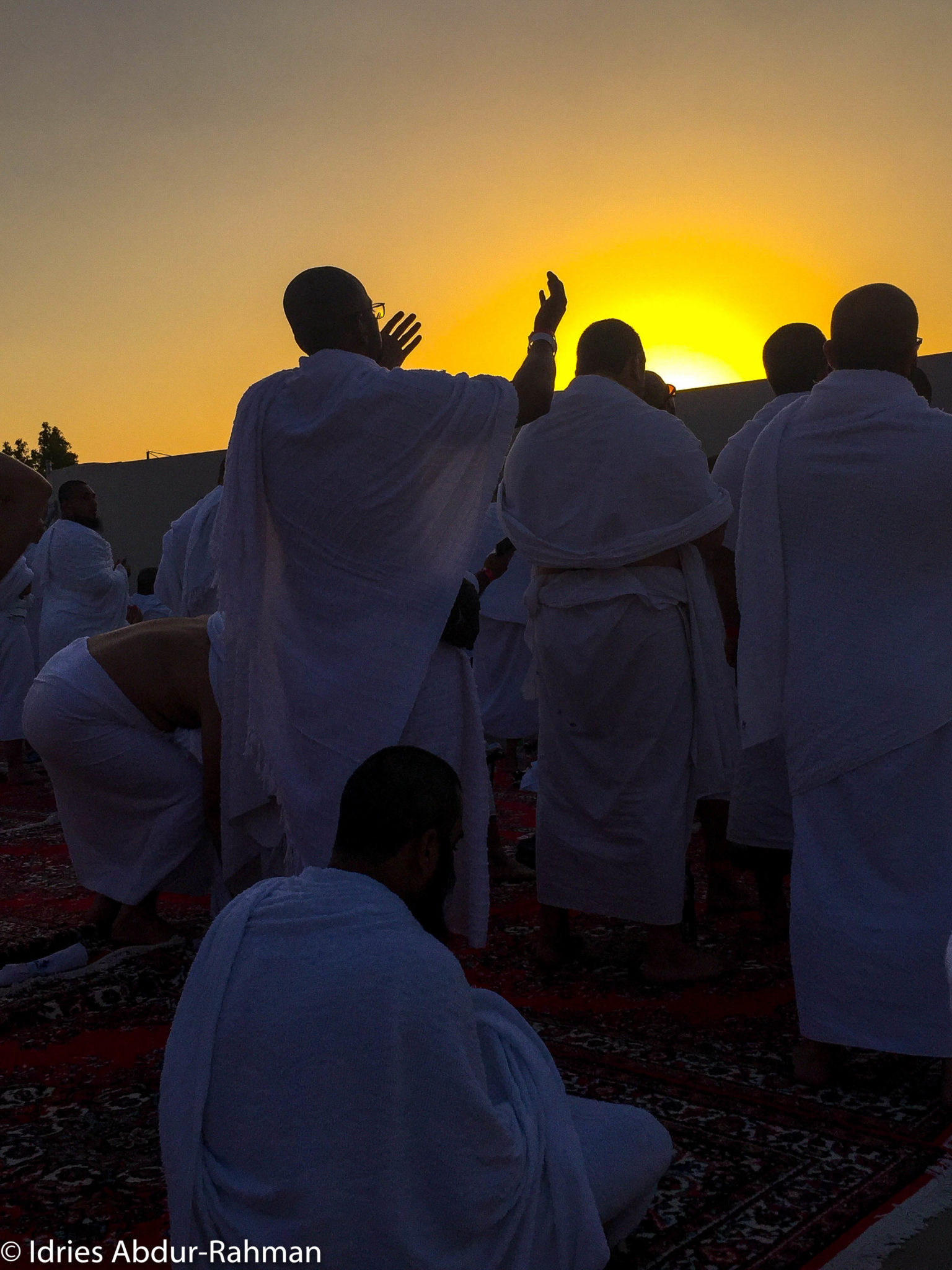

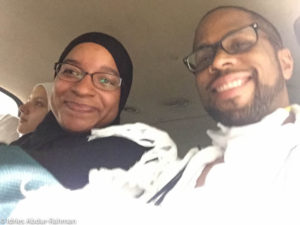
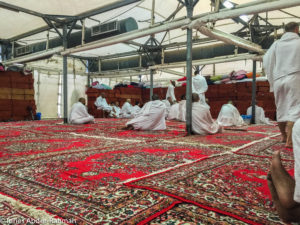
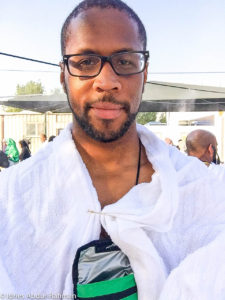
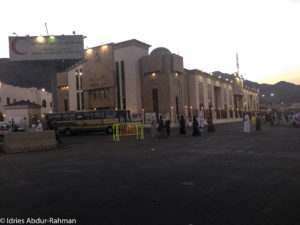
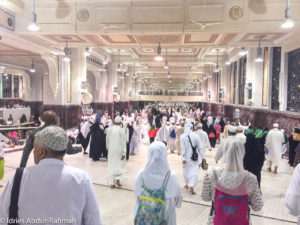
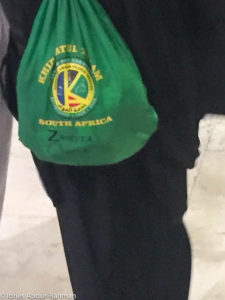
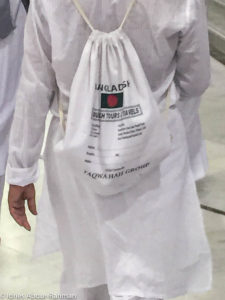
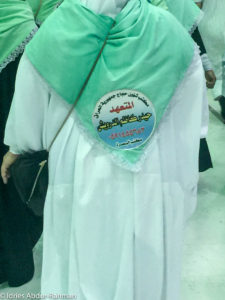

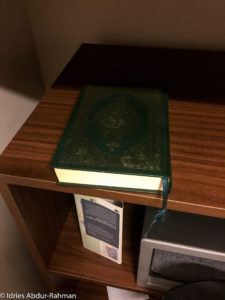





 May 19, 2018
May 19, 2018 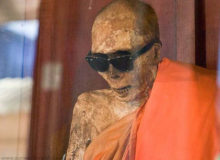



 October 20, 2023
October 20, 2023 
